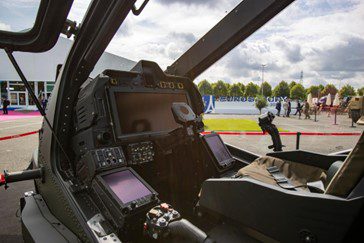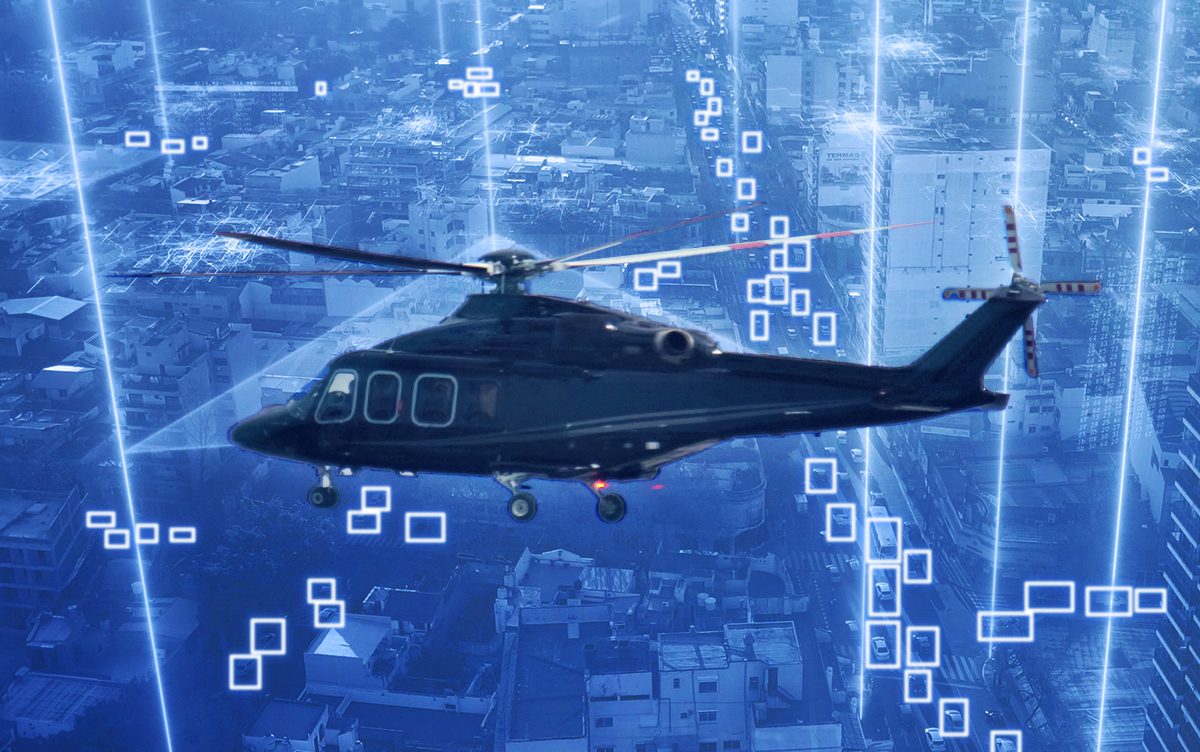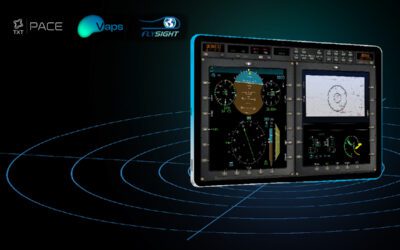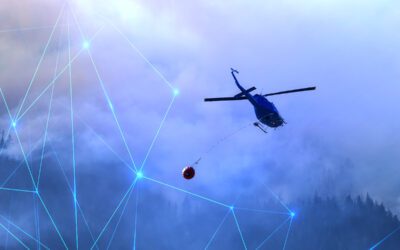Distinguishing a target from its surroundings is mission-critical, whether the operation is military reconnaissance, law enforcement event management or a search and rescue mission. To ensure a successful outcome, target recognition system has been developed using machine learning and complex algorithms to aid operators in their operations.
In this article, we’ll examine exactly what automatic target recognition is and how modern developments such as FlySight’s innovative OPENSIGHT solutions are moving this crucial area forward. We’ll look at the applications in the military and civilian arenas and go through the benefits of automatic target recognition. By discussing its use in specific architectures and platforms, we’ll demonstrate just how vital a role ATR plays in a variety of different scenarios.
What is advanced automatic target recognition?
The crucial role of automatic target recognition system is to enhance situational awareness and assist operators in identifying and retaining a specific target, usually from an aerial platform. This information is shared with ground-based operators to allow a coordinated operation that maximises resource efficiency both in the air and on the ground. As a form of augmentation, it assists human operators and enhances their situational awareness to a much higher degree.
The algorithms employed extract features and assessing the probabilities of the information being relevant to the specific search terms being used. As the amount of data the algorithm analyses is exceptionally high, the probability of locating and fixing on a specific target – even against considerable ‘background noise’ – is very high.
This system can be used to recognise, identify, and fix on a moving target in real-time. The data collated by the algorithm can also be shared instantly with ground-based operators, allowing a more targeted and streamlined procedure that maximises both mechanical and human resources.
In short, automatic target recognition system works alongside human operators, providing much-needed ‘detail’ to fill any gaps in the user’s situational awareness. It takes operators’ ability to analyse and respond to a situation to another level – especially important in fluid combat situations, fast-moving surveillance or large crowd control operations, or time-sensitive search and rescue missions.
Applications of automatic target recognition software
ATR has applicational relevance in a wider range of fields than you may first assume. Naturally, ATR has a key role in military operations, where airborne units, particularly helicopters, are a major component of the modern battlefield theatre. ATR also has a role in civilian industries, and not just in law enforcement and SAR, either.
For surveyors, using ATR can give a far more enhanced and detailed analysis of terrain that would otherwise be difficult to analyse using any other ground or air-based method. Because of the programmable nature of automatic target recognition system, select parameters can be constructed, enabling surveyors to look for specific geological features that may indicate the presence of particular minerals, for example.
It can even be used to give large farms an instant overview of a crop’s condition by using ATR to identify invasive species or pest infestations.
But automatic target recognition comes into its own in an aviation environment, and in particular the confined space of a helicopter, used with existing and already familiar hardware.
OPENSIGHT atr and the Open Architecture
The FlySight’s OPENSIGHT ATR, in particular, is designed with configurable open architecture, meaning it can operate stand-alone or as part of a larger mission system, like the OPENSIGHT Mission Console. This flexibility allows it to integrate seamlessly with third-party systems or proprietary AI networks, making it highly adaptable to evolving operational needs. For operators, this means reduced training times, as they can work with familiar hardware and software, maximizing the efficiency of both personnel and equipment.
This open architecture approach offers several advantages:
- Adaptability: The system can easily incorporate new technologies and upgrades as they become available.
- Flexibility: It allows for quick responses to changing market demands and operational requirements.
- Efficiency: the open architecture enables seamless integration of new systems without compromising functionality.
Use cases:
🚁Defence Activities | Leonardo AW249
The AW249, also known as AH-249A NEES (New Exploration and Escort Helicopter) “Fenice,” represents a significant leap forward in combat helicopter technology. Unveiled at Eurosatory in Paris, this state-of-the-art platform is set to replace the retiring AH129D helicopter by 2027 in its first Mission Configuration.
A key element of the AW249 is its open architecture related to hardware and software capabilities, a feature that Leonardo emphasized at Eurosatory, stating ” To manage a rapidly evolving scenario, the AW249 features a complete open architecture with significant further growth and system/capability adaptation to respond to the demanding market requirements”.
Beyond its high performance characteristics – including speed, range, power margin, payload capacity, hot and high condition capabilities, and maneuverability – the fundamental element of the AW249 is its ability to be integrated and interoperable in Multi-Domain Operations (MDO) scenarios. This is made possible by a highly sophisticated battle management system under development by Leonardo.
This system integrates data flows generated from the battlefield sensors and systems that are presented through an advanced Human Machine Interface (HMI) developed on Large Area Display (LAD) for both pilot and co-pilot/gunner and integrated with the Integrated Helmet Systems. It features touch screen/gesture recognition devices and a modern integrated helmet with state-of-the-art vision systems. These allow the crew to quickly access critical flight, navigation, and mission information provided by multiple detection systems and advanced connectivity.

The AW249 cockpit, showcased at Eurosatory 2024
The AW249 helicopter, which made its first flight on August 12, 2022, incorporates advanced technologies that enhance digitalization, connectivity, sensor fusion, information superiority, and interoperability and armament systems via the redundant Mission Computer System capable to provide processing and interface capabilities with crewed and uncrewed assets.
Notwhitstanding these state-of-the-art technical features, the key operational takeaways from this particular case study should consider the LI/LL (Lessens Identified/Lessons Learned) applicable to traditional RW (Rotary Wing) assets from the still ongoing war operations in Ukraine, the newly published NATO ATP-3.2.49.3.3 (Helicopter Attack TTPs) directive and therapid introduction of EDTs (Emerging Disruptive Technologies) such as the ATR (Automatic Target Recognition) capabilities e such as the FlySight’s OPENSIGHT that can be easily and quickly integrated into FMV (Full Motion Video) architectures applicable to on-board and off-board/remote IoT (Internet of Things) sensors, to reduce the crew workload during the helicopter support to land operations. .Because it utilises intuitive software and is integrated onto standard high-performance A.I. hardware and software, training times for operators are reduced. This allows all ATR users, whether they’re military, law enforcement or civilian operators, to incorporate the use of ATR into their operations far more quickly, maximising efficiency for both human operators and air time for the platform itself.
🚁Maritime Patrol Missions | ATR42MP
The ATR 42MP, used by the Italian Coast Guard, is a highly adaptable aircraft designed for a wide range of maritime surveillance missions, making it particularly well-suited for Automatic Target Recognition (ATR) tasks. This aircraft is equipped with a sophisticated system of sensors and communication tools, all integrated to enhance its capabilities in detecting, identifying, and tracking targets over both land and sea.
Key to its effectiveness in ATR operations is its multi-mode radar, which can scan large areas and detect vessels in various conditions. Additionally, the Electro-Optical Sensor Turret (EOST), equipped with both color and monochrome cameras, allows for detailed visual surveillance, providing clear imagery for target recognition and classification. The aircraft also features an Automatic Identification System (AIS), which helps track ships in real time, as well as a Direction Finder (DF) to pinpoint and identify communication signals.
What sets the ATR 42MP apart is its advanced C4ISR system (Command, Control, Communications, Computers, Intelligence, Surveillance, and Reconnaissance), which enables the crew to carry out complex missions with high efficiency. This is supported by its Maritime Patrol Mission System (MPMS), allowing operators to view real-time data and images on high-resolution displays, crucial for accurate target identification and tracking.
Beyond its ATR capabilities, the ATR 42MP is highly versatile. It can be quickly reconfigured for various missions, such as patrolling exclusive economic zones (EEZ), conducting Maritime Search and Rescue (SAR) operations, or assisting in anti-pollution surveillance. It can even be used for humanitarian purposes, like medical evacuations or transporting personnel and materials. This flexibility, combined with its state-of-the-art sensors and communication systems, makes the ATR 42MP a vital tool for the Coast Guard in managing both security and rescue operations across vast maritime areas.
🚁SAR Operations | AW139
The AW139, used by firefighting units, is a versatile and highly capable helicopter designed for a range of demanding missions, including search and rescue (SAR) operations in challenging environments like forests or landslide-affected areas. Its advanced Automatic Target Recognition (ATR) features make it particularly effective in locating and identifying individuals or objects in difficult-to-access terrains.
Equipped with state-of-the-art sensors, the AW139 utilizes electro-optical/infrared (EO/IR) systems to provide real-time imagery in both day and night conditions. These sensors, along with high-resolution cameras and a multi-mode radar, enable the helicopter to scan wide areas, even in poor visibility, identifying potential survivors or dangers.
During SAR missions in forests or landslide zones, the AW139 is equipped with a rescue hoist for extracting individuals from remote or hazardous locations. Its powerful searchlights and advanced communication systems ensure continuous coordination with ground teams, making it indispensable in time-critical situations. The helicopter’s ability to hover in confined spaces, along with its speed and agility, enhances its role in life-saving operations, where precise and rapid target recognition is crucial.
Additionally, the AW139’s spacious cabin accommodates rescue teams and medical equipment, enabling immediate medical care and evacuation. Its ATR capabilities, combined with its effectiveness in rugged environments, make the AW139 an essential asset for firefighting SAR missions, ensuring fast and efficient response in emergencies.
FlySight and Aitech Systems – pushing the boundaries of modern AI
Another collaboration that has extended the reach of ATR has been FlySight’s work alongside Aitech Systems. In this instance, OPENSIGHT software combined with A179 Lighting enhancement to work as a remote ATR sensor that could capture real-time data from a variety of different inputs. Interference can be alternated from local HD-SDI to remote or multiple STANAG 4609 streams. This flexibility allows this advanced integration system to work in a wide range of different scenarios.
The key is that the open architecture structure enables end-users to process data in real time using pre-configured and customised neural networks, responding to dynamic operational demands. It ensures compliance with MISB ST-0903 (VMTI) and interoperable with legacy systems already in use by both military and civilian operators.
Other benefits of automatic target recognition software
The automatic target recognition system offers advanced levels of interoperability, making it easy to integrate into existing operating systems currently in use. It allows for real-time operation, capturing in various video data and images from different sensors and displaying their outputs on a display, which can be shared with the rest of the operational team on different displays platforms. But it can do even more in difficult conditions, integrated with other Enhanced Reality System tools, including AR/MR, fog suppression, false colours, or super-resolution, which improve situational awareness, allowing the ATR system to better identify and lock onto its target.
This ability to work alongside other enhanced reality software enables both military and civilian users to create a bespoke operating system specifically designed for their needs. The fact that it is intuitive to use and takes less training time than other options also ensures that the system can be up and running faster, and operators and ground crew are all using the same protocols to enhance information flow.
Its ability to cope with Big Data in real-time and the increased accuracy of target detection make automatic recognition system a huge step forward in operational turnkey solutions. From flight planning to the mission itself to completing target recognition and tracking tasks, data analysis is made easier and faster using enhanced reality tool such as this.
Find out more from FlySight
Focused on continual development and at the cutting edge of Enhanced Reality integration into mission systems, FlySight’s OPENSIGHT system represents the very latest in both concept and application for mission-critical software. To find out more about FlySight’s OPENSIGHT automatic recognition software, watch our informative video or contact us today to discuss your needs with one of our experts.
Credits
Article edited in collaboration with Marco Gazzaniga, Head of Future System Business Development at FlySight.
Article thumbnail is adapted from “Photo” used under CC BY 4.0.





